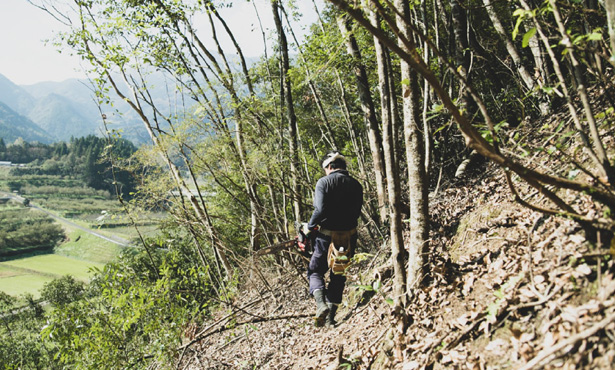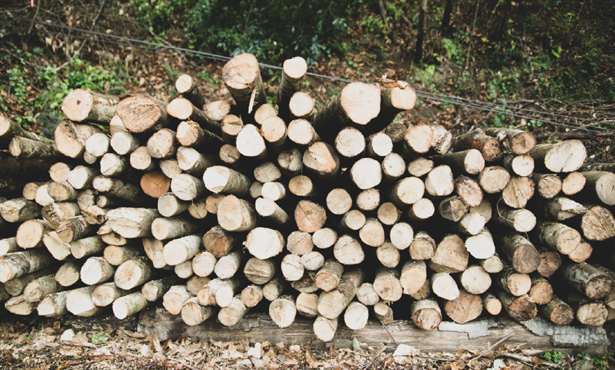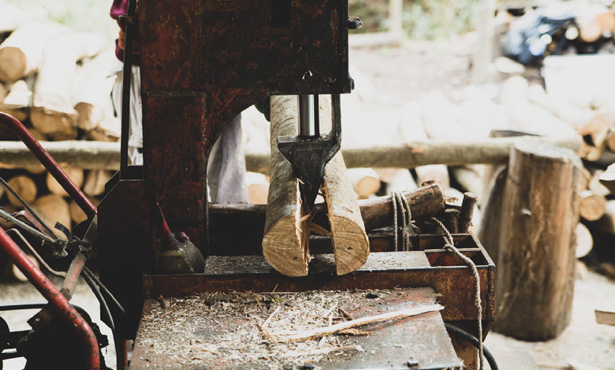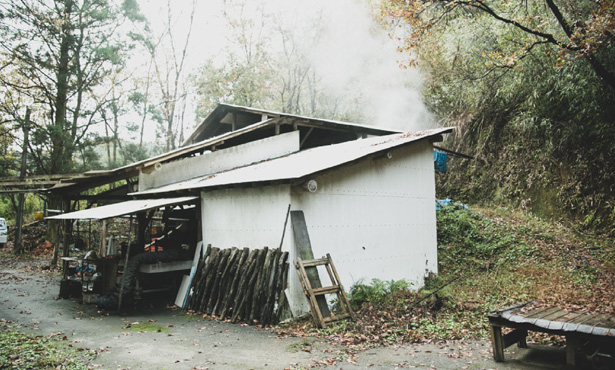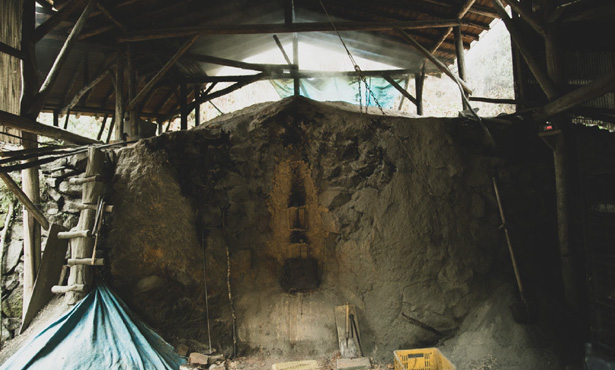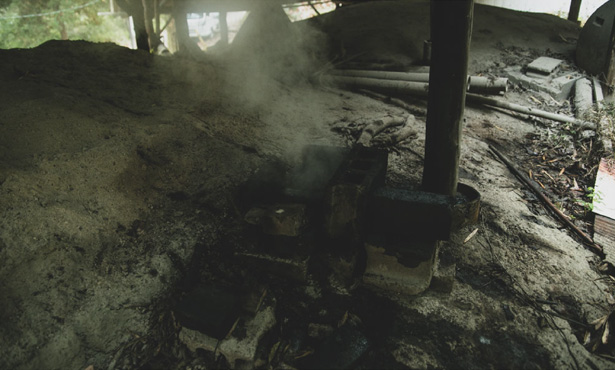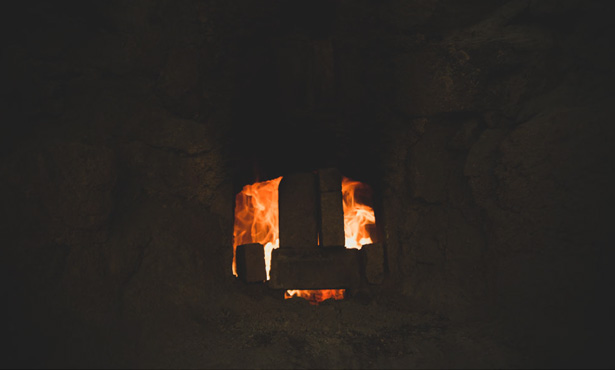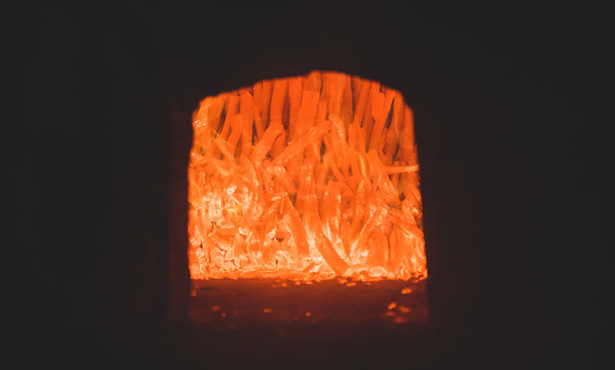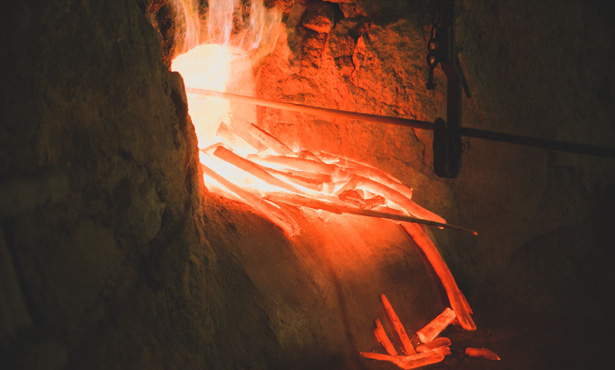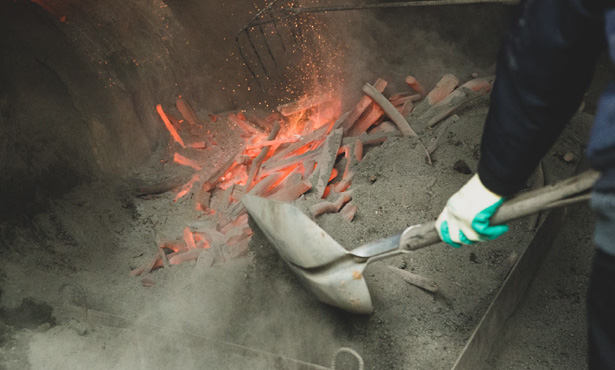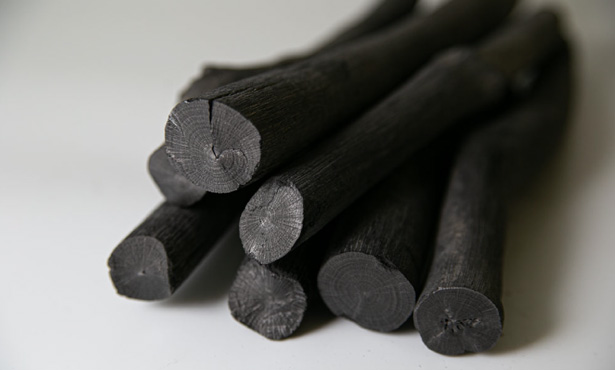About Hyuga Binchotan
"Hyuga Binchotan"
A charcoal making business of Misato-Cho that is designated as
an intangible folk cultural property of Miyazaki.

"Hyuga Binchotan" is granted as one of the three Binchotan of Japan, as well as "Tosa Binchotan" produced in Kochi and "Kishu Binchotan" produced in Wakayama.
The other producing areas are using "ubame oak", called "Ubamegashi" in Japan, as a material. However, ubame oak is not grown natively in the producing area of "Hyuga Binchotan", so "Japanese blue oak", called "Arakashi" in Japan, is used as a material. Having said that, to produce Binchotan from Japanese blue oak is relatively difficult. Therefore, unique charcoal making skills have been developed in Misato-Cho, such as changing the shape of kiln and taking over 30 days to dehydrate the wood.
Binchotan made from Japanese blue oak is relatively a little bit soft and tend not to burst. The fire power is little bit weak compare to Binchotan made in other areas. However, it is far stronger than the black charcoal. Thanks to these characteristics, Hyuga Binchotan is regarded as the best Binchotan for beginners.
In addition to above points, there are other features of Hyuga Binchotan. For example, it is said that Japanese blue oak is lighter and easier to handle than ubame oak, the appearance of the charcoal is beautiful, and it is easy-to-adjust the fire power.
The history of Hyuga Binchotan started in Edo period and it lasts 300 years. Hyuga Binchotan has been highly valued in the restaurant in Kyoto for a long time.
The material of Hyuga Binchotan, Japanese blue oak, is cut from the forests in the northern part of Miyazaki. About 30 years old oaks grew in a slight sharp slied are cut by chain-saw, and cut into the same length, then carried out to the workspace.
A sprout naturally shoots from a stump after cutting down. By cutting down trees every decade, the forest is rejuvenated by sunlight, and that brings a positive effect such as preventing devastation or deforestation.
Features
 Burning
Burning
for a long time Soft and ignites
Soft and ignites
readily Tend not to burst
Tend not to burst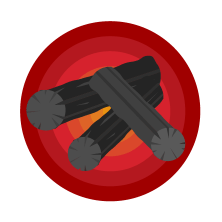 High far-infrared
High far-infrared
effect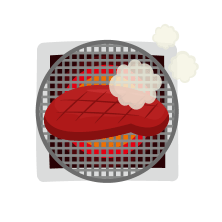 Best for cooking food
Best for cooking food
soft and juicy
Manufacturing process
Step1:Work in the forest
Japanese blue oak trees, which is naturally grown in the mountain in Misato-Cho, are cutting down with chain-saw, and carried out to the workplace. At the same time, logs for firewood are collected too.
The craftsman also carries thin branches, which is not usually used for charcoal making, in order not to waste any of oak trees as they grown by taking for a long time.
Charcoal made from such thin branches is out of specification even though the quality is fine. This is the birth of Binchotan powder.
Step2:Preparation for kilning
The trees are cut into two or four depends on its width.
Since a kiln for Binchotan is large, about 7 ton of logs are required at once.
Japanese blue oak is hard and heavy, so cutting down them is a very heavy task even using a machine. Indeed, the logs must be "fresh" that is cut just before kilning. Which means, it is impossible to prepare a lot of material trees in advance.
That is why, craftsman goes to a forest and cut material trees for the next production during a next step "Kilning for drying" which takes about a month.
Step3:Kilning for drying (takes about 30 days in average)
After the logs are jammed into a kiln, the entrance of the kiln is covered by sand and bricks with leaving only a small fire hole. Then, firing firewood, called "Tegi", in the front side of the kiln in order to fully dehydrate the log slowly. It takes about a month.
There is an only air exit hole, called "Syouji", in the upper back side of the kiln. During the kilning for dehydration, steam is constantly coming off from the hole.
The craftsman understand the condition of inside the kiln from the color, temperature, smell, or tastes of steam from Syouji because it is impossible to see the inside of the kiln which is very dark.
Step4:"Hiage", "Nerashi" (takes about a week in average)
After water of oak trees in the kiln evaporates, carbonization is progressed. A phenomenon that a dried oak is started burned is called "Hiage". At that timing, the craftsman plugs the hole of the kiln so that the inside of the kiln becomes oxygen-deprived condition. By doing it, the craftsman maintains a fine balance that the oak is about to burn but not, and the fire is about to banish but not, in order to make a condition that only carbonization is progressed.
All oak trees in the kiln are carbonized in about a week, then the steps proceed to the final process of making Binchotan called "Nerashi". In the process, all impurities in the charcoal are burned out by increasing the temperature of inside the kiln with adjusting the air. The temperature becomes over 1,200 Celsius.
Step5:Bring out from the kiln (takes about 14 hours in average)
Binchotan is bring out the kiln little by little by using a metal stick. This step is conducted with checking the condition of charcoal. Thus, it takes about 14 hours to take out all of the charcoal.
The work is started from around 1 a.m. so that it will end at early evening.
After taking out the charcoal from the kiln, then burnishing the fire quickly by covering it with ash, called "subai". Binchotan taken out from "subai" is covered in white ash. This is way Binchotan is called "White charcoal."
Step6:A finishing touch
Binchotan is cut into an easy-to-use length.
The work is finally done! It has been two months since the craftsman cut the oak trees in the forest.
The cross-section of Binchotan is so beautiful as it is cut manually with an ax.
Also, when hitting Binchotan against each other, a metallic sound is made.


